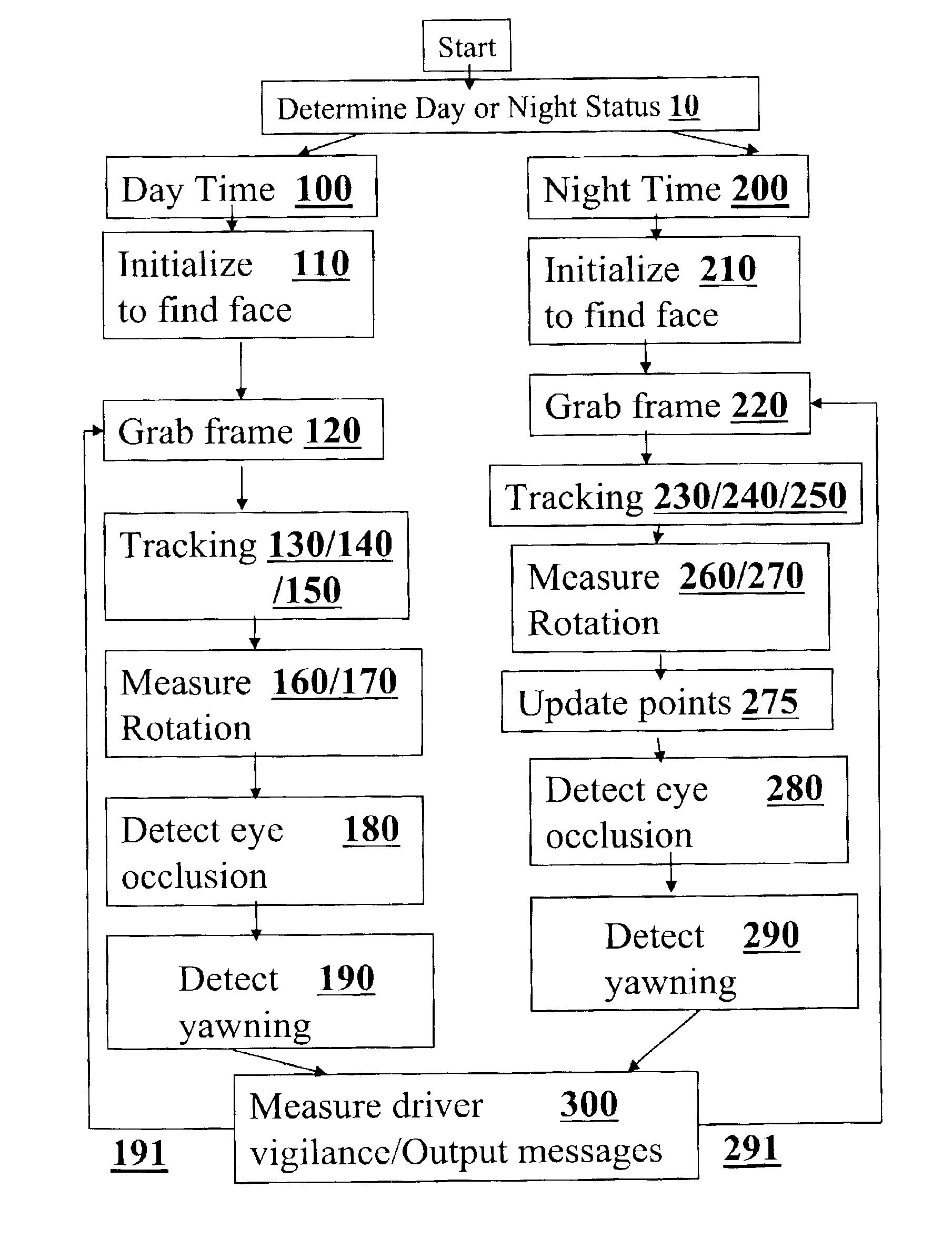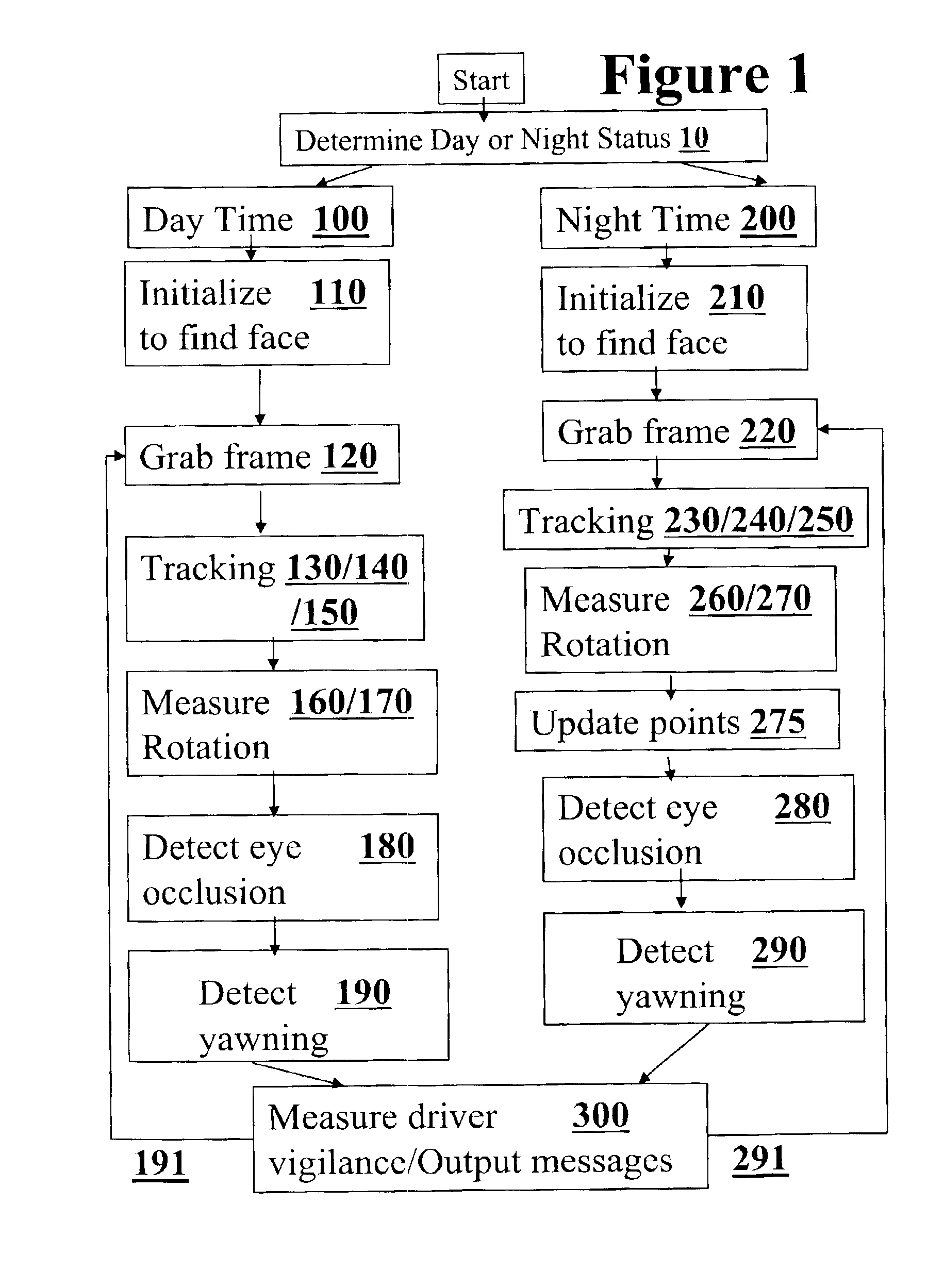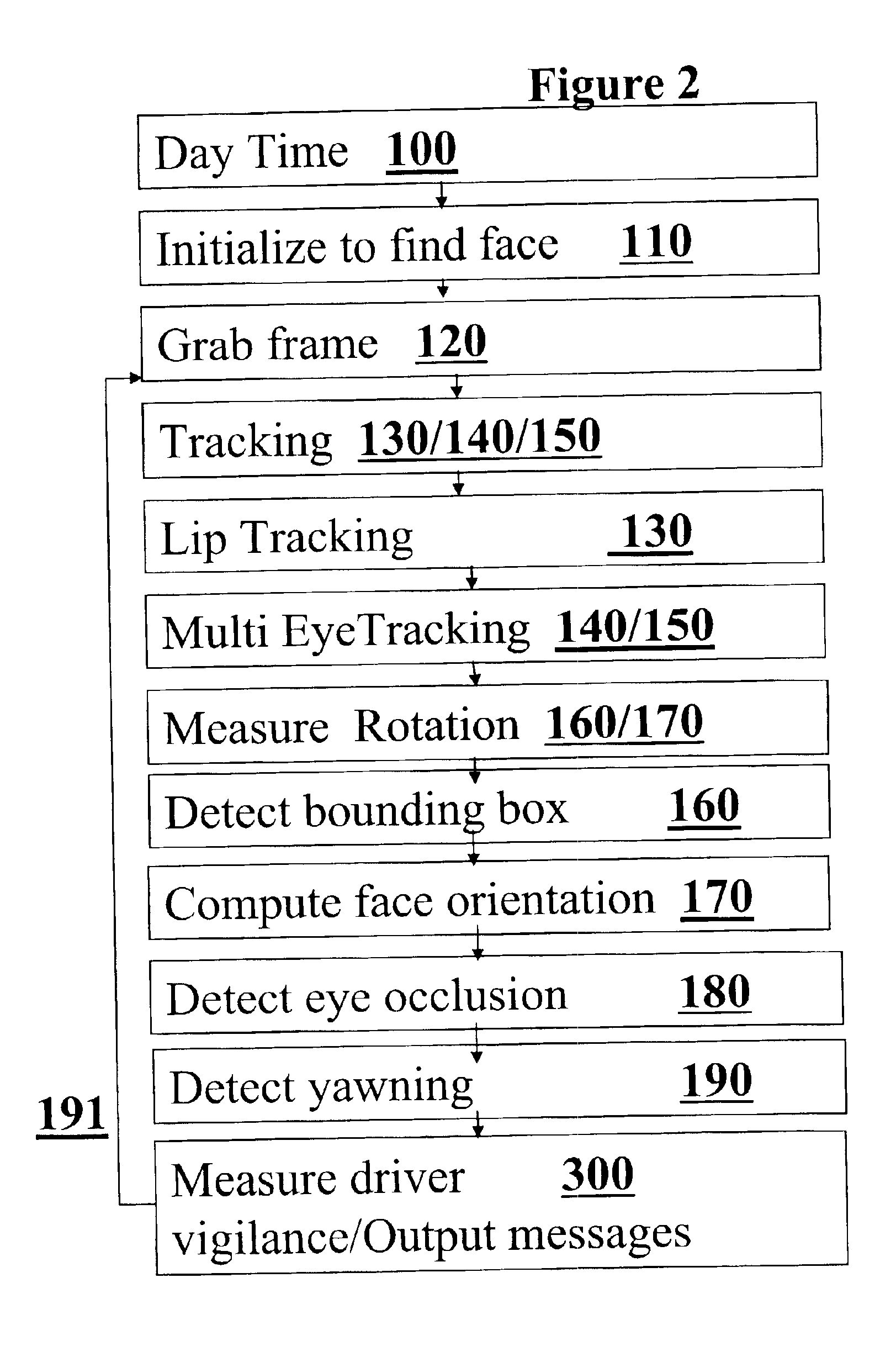Algorithm for monitoring head/eye motion for driver alertness with one camera
a driver alertness and camera technology, applied in the field of driver alertness monitoring head/eye motion with one camera, can solve the problems of driver fatigue and lack of sleep of drivers especially those driving large vehicles such as trucks, buses, etc., and achieve the effect of detecting driver fatigue and being easily used
- Summary
- Abstract
- Description
- Claims
- Application Information
AI Technical Summary
Benefits of technology
Problems solved by technology
Method used
Image
Examples
Embodiment Construction
[0087]Before explaining the disclosed embodiment of the present in detail it is to be understood that the invention is not limited in its application to the details of the particular arrangement shown since the invention is capable of other embodiments. Also, the terminology used herein is for the purpose of description and not of limitation.
[0088]The novel invention can analyze video sequences of a driver for determining when the driver is not paying adequate attention to the road. The invention collects data with a single camera placed that can be placed on the car dashboard. The system can focus on rotation of the head and eye blinking, two important cues for determining driver alertness, to make determination of the driver's vigilance level. Our head tracker consists of tracking the lip corners, eye centers, and side of the face. Automatic initialization of all features is achieved using color predicates and a connected components algorithm. A connected component algorithm is on...
PUM
 Login to View More
Login to View More Abstract
Description
Claims
Application Information
 Login to View More
Login to View More - R&D
- Intellectual Property
- Life Sciences
- Materials
- Tech Scout
- Unparalleled Data Quality
- Higher Quality Content
- 60% Fewer Hallucinations
Browse by: Latest US Patents, China's latest patents, Technical Efficacy Thesaurus, Application Domain, Technology Topic, Popular Technical Reports.
© 2025 PatSnap. All rights reserved.Legal|Privacy policy|Modern Slavery Act Transparency Statement|Sitemap|About US| Contact US: help@patsnap.com



